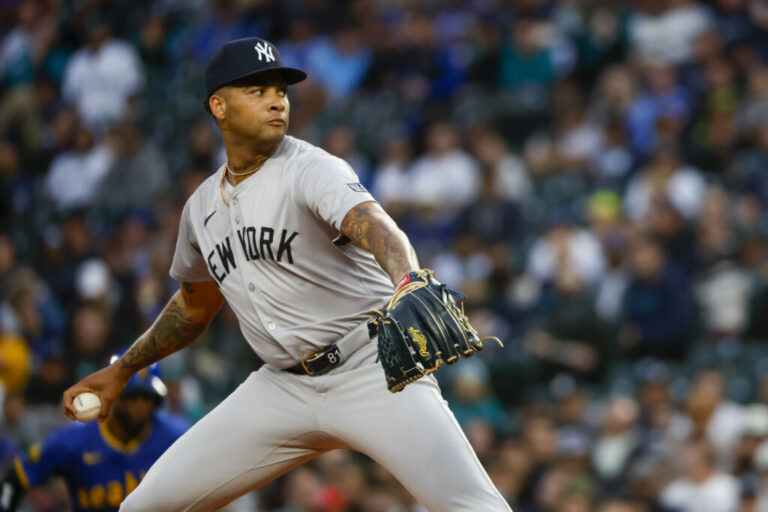

This newsletter is devoting several months to an examination of past greatness. It’s focusing on history’s top 50 ballclubs — collectively known as the Best 50 — as determined by my new book, Baseball’s Best (and Worst) Teams. We’ve reached No. 49 on the all-time list, the 1923 New York Yankees.
Here’s a quick boilerplate explanation that I’m appending to every story in this series:
I compiled the Best 50 by analyzing 2,544 major-league teams from 1903 to 2024. Those clubs have been ranked by their team scores (TS), which are plotted on a 100-point scale. (A given club’s all-time percentile is the percentage of the other 2,543 teams that it outperformed.)
See my book for an explanation of my TS calculations. The book also offers separate breakdowns of the best and worst clubs for every decade and franchise, comprehensive profiles of the Best 50 (including position-by-position lineups and much more information than you’ll find in this newsletter), and similar summaries of the 10 worst teams of all time.
Now on to today’s profile.
-
Team: 1923 New York Yankees
-
Team score: 84.798 points
-
All-time rank: 49 of 2,544
-
All-time percentile: 98.11%
-
Season record: 98-54 (.645)
-
Season position: First place in American League
-
Final status: World champion
New York’s American League franchise spent its first two decades mired in mediocrity. The Yankees (initially known as the Highlanders) failed to win an AL pennant between their 1903 creation and 1920. They finished higher than fourth place only five times over that 18-year span.
This unhappy pattern was altered by the most dramatic transaction in the history of professional sports. Boston agreed in December 1919 to ship baseball’s preeminent slugger, Babe Ruth, to New York for $100,000, the current equivalent of $1.8 million. Ruth proved to be worth every penny. He powered the Yankees to their first league championship in 1921, launching the franchise on an unprecedented streak of 29 AL titles in 44 seasons.
The first two pennants were won by tight margins — 4.5 games in 1921, a single game in 1922 — but first place came easily in 1923. The Yankees sprinted to an eight-game lead by the end of June, then doubled it to 16 by the end.
Get the complete lowdown on the 50 greatest (and 10 weakest) clubs of all time
John McGraw finally broke out of his postseason slump in 1921. The previous four World Series appearances by the Giants had ended in defeat, but McGraw’s club vanquished the Yankees in ’21 and duplicated the feat a year later.
The Giants’ superiority reflected the unequal relationship between the two New York clubs, which shared the Polo Grounds from 1913 through 1922. The Giants were the landlords, the Yankees their tenants.
But the Yanks moved to a sparkling new stadium in 1923, and they hoped to punctuate their independence with their very first world championship. The ’23 series began in bleakly familiar fashion, with the Giants taking two of the first three games. But the Yankees unleashed their offensive firepower thereafter, winning the final three contests by a combined score of 22-9.
A new installment will arrive in your email each Tuesday and Friday morning
The American League reinstated the Most Valuable Player Award in 1922, but Babe Ruth didn’t receive a single vote. Commissioner Kenesaw Mountain Landis had barred major leaguers from playing exhibition games after the 1921 season. Ruth went barnstorming anyway, so Landis suspended him for a quarter of the ’22 schedule. Fans booed when the slugger, visibly out of shape, finally took the field. “Nobody loves a fat man,” scoffed the New York Herald.
But 1923 was a different story. The 28-year-old outfielder started all 152 games, batted .393, and topped the majors with 41 homers and 130 RBIs. Ruth won the MVP trophy unanimously. “His name and deeds will echo through the ages long after some of those who would belittle him are forgotten as having ever lived,” exclaimed the Sporting News.
The Yankees’ championship would have been impossible without Boston’s largesse. Ruth, of course, was the biggest gift bestowed by the Red Sox, though not the only one. Almost half of the Yanks’ 1923 World Series roster — 11 of 24 players — had arrived directly from Boston. Among those transplants were all four New York pitchers who registered at least 17 wins in 1923: Sam Jones, Joe Bush, Herb Pennock, and Waite Hoyt.
First baseman Wally Pipp was a rarity on the ’23 club, a homegrown star. He drove home 109 runs (fourth-best in the AL) in his ninth season with the Yankees. Opponents had great respect for Pipp’s power. “I usually play a short field,” said famed center fielder Tris Speaker. “But, of course, in the case of such a batter as Pipp, it would be foolish to play in.”






